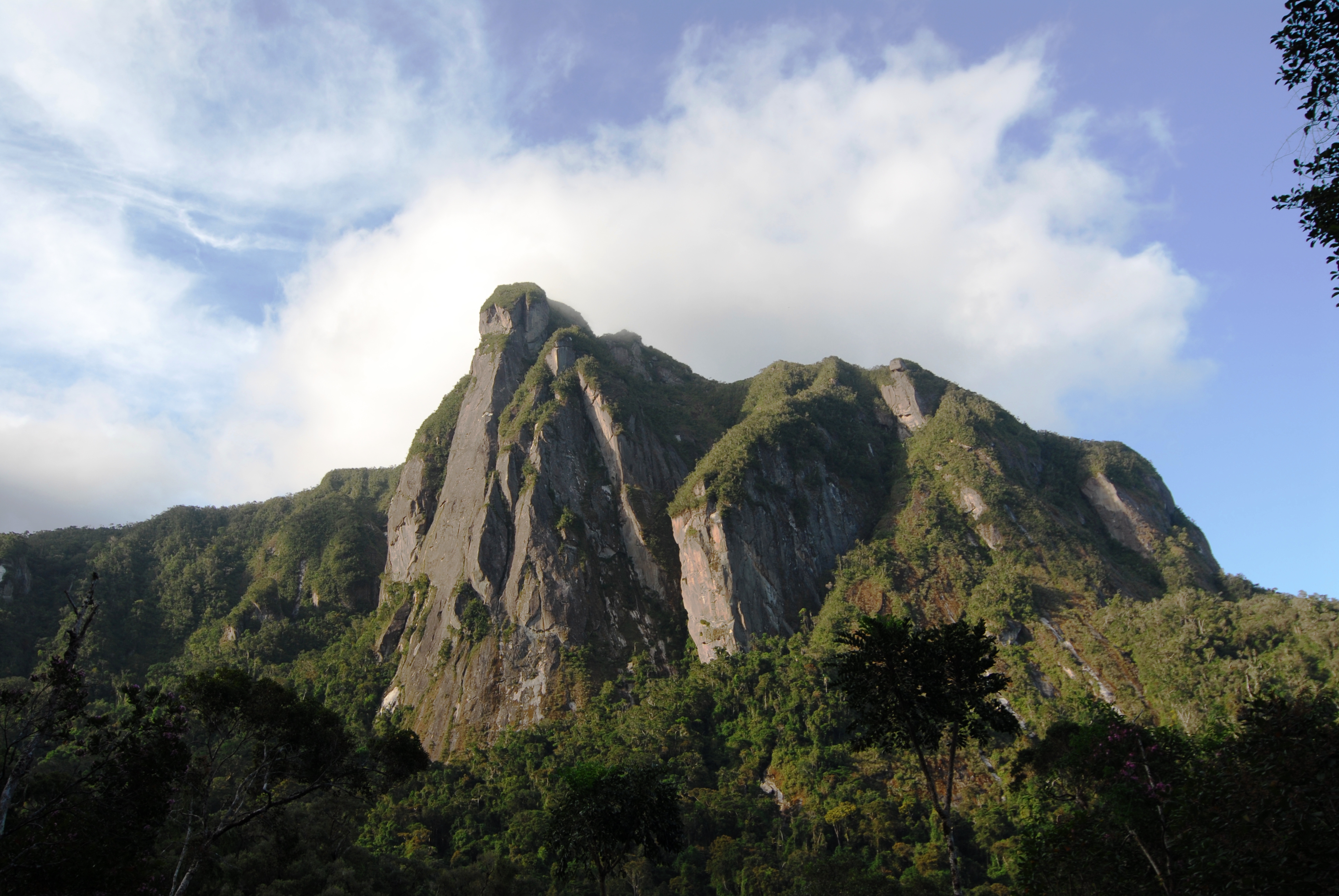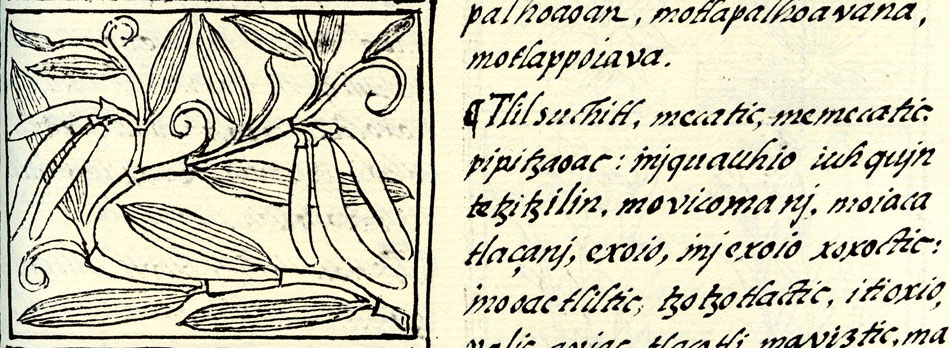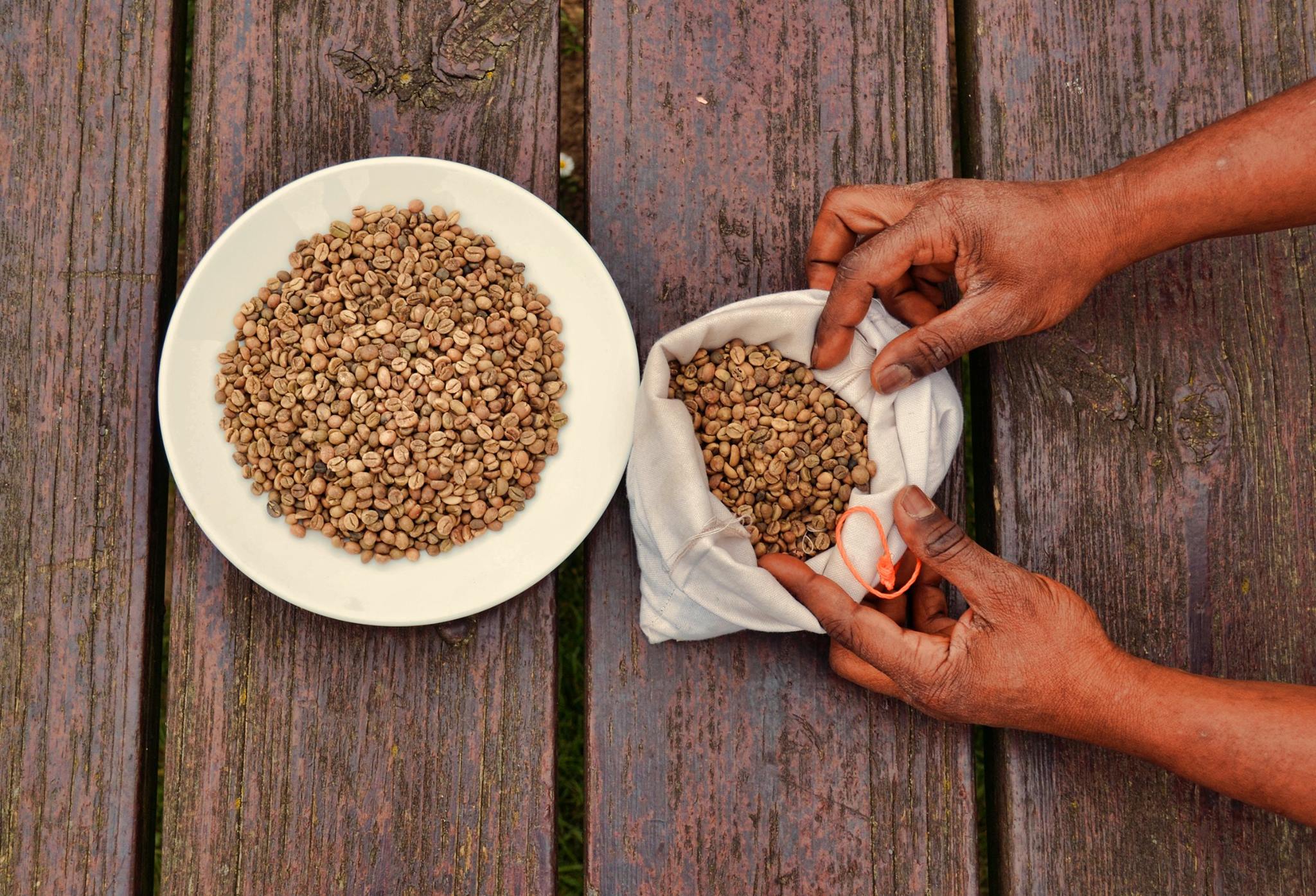|
Farahalana
Farahalana is a municipality in northern Madagascar. It belongs to the district of Sambava, which is a part of Sava Region and lies near the mouth of the Lokoho River at the Indian Ocean. The population of the commune was estimated to be approximately 23,000 in 2001 commune census. Primary and junior level secondary education are available in town. The majority 96% of the population the commune are farmers. The most important crop is vanilla, while other important products are coffee, cloves and rice. Services provide employment for 2% of the population. Additionally fishing employs 2% of the population. Geography The municipality is situated south of Sambava Sambava is a city and commune (commune urbaine; ) at the east coast of northern Madagascar. It is the capital of Sambava District and Sava Region. The population of the commune was 84,039 in as of the 2018 commune census. Infrastructure Sambav ... on the National Road 5 on the Lokoho River. References Popu ... [...More Info...] [...Related Items...] OR: [Wikipedia] [Google] [Baidu] |
Lokoho River
The Lokoho River is located in northern Madagascar. It drains to the north-east coast, into the Indian Ocean. It drains the southern half of the Marojejy Massif. Its mouth is situated 25 km in the south of Sambava, near Farahalana. There were some projects for the installation of hydroelectric power plants by Jirama in the 1970s, but they were never completed. In 2002 another project, for a plant of 6 kW capacity by Jirama in cooperation with the French EDF, German RWE, GTZ and Canadian Hydro-Québec Hydro-Québec () is a Canadian Crown corporations of Canada#Quebec, Crown corporation public utility headquartered in Montreal, Quebec. It manages the electricity generation, generation, electric power transmission, transmission and electricity ..., was launched. It was stopped in 2009 due to the Malagasy political crisis. References External linksYoutube video of ''Lokoho River'' Rivers of Madagascar Rivers of Sava Region {{Madagascar-river-stub ... [...More Info...] [...Related Items...] OR: [Wikipedia] [Google] [Baidu] |
Sambava District
Sambava District is a Districts of Madagascar, district in northern Madagascar. It is a part of Sava Region and borders the districts of Antalaha District, Antalaha to the south, Andapa District, Andapa to the south-west, Ambilobe District, Ambilobe to the north-west and Vohemar District, Iharana to the north. The area is and the population was estimated to be 429,947 in 2020.Institut National de la Statistique, Antananarivo. Communes The district is further divided into 25 communes: * Ambatoafo * Amboangibe * Ambodiampana, Sambava, Ambodiampana * Ambodivoara * Ambohimalaza, Sambava, Ambohimalaza * Ambohimitsinjo * Analamaho * Andrahanjo * Andratamarina * Anjangoveratra * Anjialava * Anjinjaomby * Antindra * Antsahambaharo * Antsahavaribe, Sambava, Antsahavaribe * Bemanevika * Bevonotra * Farahalana * Maroambiny * Marogaona * Marojala * Morafeno, Sambava, Morafeno * Nosiarina * Sambava * Tanambao Daoud References and notes {{SavaMG-geo-stub Districts of Sava Region ... [...More Info...] [...Related Items...] OR: [Wikipedia] [Google] [Baidu] |
Regions Of Madagascar
Madagascar is divided into 23 region, regions (''faritra''). These formerly second-tier administrative divisions became first-level administrative divisions when the former six Provinces of Madagascar, provinces were dissolved on 4 October 2009. Elections The last elections for the regional councils were held on 16 March 2008. See also * Subdivisions of Madagascar * Districts of Madagascar *List of regions of Madagascar by Human Development Index * List of cities in Madagascar References Sources * Population, area: ''Madagascar: Profil des marchés pour les évaluations d’urgence de la sécurité alimentaire'* (in French:Découpage Territorial - L'Express.mg Regions of Madagascar, Subdivisions of Madagascar Lists of administrative divisions, Madagascar, Regions Administrative divisions in Africa, Madagascar 2 First-level administrative divisions by country, Regions, Madagascar Madagascar geography-related lists {{Madagascar-geo-stub ... [...More Info...] [...Related Items...] OR: [Wikipedia] [Google] [Baidu] |
Sava Region
Sava is a Regions of Madagascar, region in northern Madagascar. Its capital is Sambava. Until 2009 Sava belonged to Antsiranana Province. The region is situated at the northern part of the east coast of Madagascar. It is bordered by the region Diana Region, Diana to the north, Sofia Region, Sofia to the west, and Analanjirofo to the south. As of 2018, its population was 1,123,013 and the total area is . The region contains wild areas such as Marojejy National Park. The name of the region is composed of the initial letters of its four principal towns: Sambava, Antalaha, Vohémar, Iharana (Vohimaro), and Andapa. Each of these towns claims itself the World Capital of Vanilla, a spice of which the region is the largest producer of in the world (especially the highly sought Bourbon vanilla variety). The economic importance of vanilla cultivation in the Sava Region encouraged the reconstruction of the road that connects the towns, called the ''Route de la vanille'' (The Vanilla Route), i ... [...More Info...] [...Related Items...] OR: [Wikipedia] [Google] [Baidu] |
Districts Of Madagascar
Districts are second-level administrative divisions of Madagascar below the regions. There are 114 districts in Madagascar. Districts are themselves divided into communes; while some of the districts in urban areas (such as the City districts of Antananarivo, Antsirabe I, Antsiranana I, Fianarantsoa I, Toamasina I and Toliara I) and offshore islands (such as the districts of Nosy Be and Nosy Boraha) each consist of only one commune, most of the districts are divided typically into 5–20 communes. List of districts * Note that Isandra, Lalangina and Vohibato Districts previously formed Fianarantsoa II District (within Haute Matsiatra Region) which has now been split into these three new districts. Another new district was formed by the splitting off of the new Mandoto District from Betafo District (within Vakinankaratra Region). See also * Subdivisions of Madagascar * Provinces of Madagascar * Regions of Madagascar Madagascar is divided into 23 region, reg ... [...More Info...] [...Related Items...] OR: [Wikipedia] [Google] [Baidu] |
East Africa Time
East Africa Time, or EAT, is a time zone used in eastern Africa. The time zone is three hours ahead of UTC ( UTC+03:00), which is the same as Moscow Time, Arabia Standard Time, Further-eastern European Time and Eastern European Summer Time. As this time zone is predominantly in the equatorial region, there is no significant change in day length throughout the year and so daylight saving time is not observed. East Africa Time is observed by the following countries: * * * * * * * * * See also * Moscow Time, an equivalent time zone covering Belarus, Turkey Turkey, officially the Republic of Türkiye, is a country mainly located in Anatolia in West Asia, with a relatively small part called East Thrace in Southeast Europe. It borders the Black Sea to the north; Georgia (country), Georgia, Armen ... and most of European Russia, also at UTC+03:00 * Arabia Standard Time, an equivalent time zone covering Bahrain, Iraq, Kuwait, Qatar, Saudi Arabia and Yemen, als ... [...More Info...] [...Related Items...] OR: [Wikipedia] [Google] [Baidu] |
Madagascar
Madagascar, officially the Republic of Madagascar, is an island country that includes the island of Madagascar and numerous smaller peripheral islands. Lying off the southeastern coast of Africa, it is the world's List of islands by area, fourth largest island, the List of island countries, second-largest island country, and the List of countries and dependencies by area, 46th largest country overall. Its capital and List of cities in Madagascar, largest city is Antananarivo. Following the prehistoric breakup of the supercontinent Gondwana, Madagascar split from Africa during the Early Jurassic period, around 180 million years ago, and separated from the Indian subcontinent approximately 90 million years ago. This isolation allowed native plants and animals to evolve in relative seclusion; as a result, Madagascar is a biodiversity hotspot and one of the world's 17 megadiverse countries, with over 90% of its wildlife of Madagascar, wildlife being endemic. The island has ... [...More Info...] [...Related Items...] OR: [Wikipedia] [Google] [Baidu] |
Indian Ocean
The Indian Ocean is the third-largest of the world's five oceanic divisions, covering or approximately 20% of the water area of Earth#Surface, Earth's surface. It is bounded by Asia to the north, Africa to the west and Australia (continent), Australia to the east. To the south it is bounded by the Southern Ocean or Antarctica, depending on the definition in use. The Indian Ocean has large marginal or regional seas, including the Andaman Sea, the Arabian Sea, the Bay of Bengal, and the Laccadive Sea. Geologically, the Indian Ocean is the youngest of the oceans, and it has distinct features such as narrow continental shelf, continental shelves. Its average depth is 3,741 m. It is the warmest ocean, with a significant impact on global climate due to its interaction with the atmosphere. Its waters are affected by the Indian Ocean Walker circulation, resulting in unique oceanic currents and upwelling patterns. The Indian Ocean is ecologically diverse, with important ecosystems such ... [...More Info...] [...Related Items...] OR: [Wikipedia] [Google] [Baidu] |
Census
A census (from Latin ''censere'', 'to assess') is the procedure of systematically acquiring, recording, and calculating population information about the members of a given Statistical population, population, usually displayed in the form of statistics. This term is used mostly in connection with Population and housing censuses by country, national population and housing censuses; other common censuses include Census of agriculture, censuses of agriculture, traditional culture, business, supplies, and traffic censuses. The United Nations (UN) defines the essential features of population and housing censuses as "individual enumeration, universality within a defined territory, simultaneity and defined periodicity", and recommends that population censuses be taken at least every ten years. UN recommendations also cover census topics to be collected, official definitions, classifications, and other useful information to coordinate international practices. The United Nations, UN's Food ... [...More Info...] [...Related Items...] OR: [Wikipedia] [Google] [Baidu] |
Vanilla
Vanilla is a spice derived from orchids of the genus ''Vanilla (genus), Vanilla'', primarily obtained from pods of the flat-leaved vanilla (''Vanilla planifolia, V. planifolia''). ''Vanilla'' is not Autogamy, autogamous, so pollination is required to make the plants produce the fruit from which the vanilla spice is obtained. In 1837, Belgian botanist Charles François Antoine Morren discovered this fact and pioneered a method of artificially pollinating the plant. The method proved financially unworkable and was not deployed commercially. In 1841, Edmond Albius, a 12-year-old slave who lived on the French island of Réunion in the Indian Ocean, discovered that the plant could be hand-pollination, hand-pollinated. Hand-pollination allowed global cultivation of the plant. Noted French botanist and plant collector Jean Michel Claude Richard falsely claimed to have discovered the technique three or four years earlier. By the end of the 20th century, Albius was considered the ... [...More Info...] [...Related Items...] OR: [Wikipedia] [Google] [Baidu] |
Coffee
Coffee is a beverage brewed from roasted, ground coffee beans. Darkly colored, bitter, and slightly acidic, coffee has a stimulating effect on humans, primarily due to its caffeine content, but decaffeinated coffee is also commercially available. There are also various coffee substitutes. Typically served hot, coffee has the highest sales in the world market for hot drinks. Coffee production begins when the seeds from coffee cherries (the '' Coffea'' plant's fruits) are separated to produce unroasted green coffee beans. The "beans" are roasted and then ground into fine particles. Coffee is brewed from the ground roasted beans, which are typically steeped in hot water before being filtered out. It is usually served hot, although chilled or iced coffee is common. Coffee can be prepared and presented in a variety of ways (e.g., espresso, French press, caffè latte, or already-brewed canned coffee). Sugar, sugar substitutes, milk, and cream are often added to mask ... [...More Info...] [...Related Items...] OR: [Wikipedia] [Google] [Baidu] |
Clove
Cloves are the aromatic flower buds of a tree in the family Myrtaceae, ''Syzygium aromaticum'' (). They are native to the Maluku Islands, or Moluccas, in Indonesia, and are commonly used as a spice, flavoring, or Aroma compound, fragrance in final good, consumer products, such as toothpaste, soaps, or cosmetics. Cloves are available throughout the year owing to different harvest seasons across various countries. Etymology The word ''clove'', first used in English in the 15th century, derives via Middle English , Anglo-French ''clowes de gilofre'' and Old French , from the Latin word ' "nail". The related English word ''gillyflower'', originally meaning "clove", derives via said Old French and Latin ', from the Greek "clove", literally "nut leaf". Description The clove tree is an evergreen that grows up to tall, with large leaves and crimson flowers grouped in terminal clusters. The flower buds initially have a pale hue, gradually turn green, then transition to a bright red ... [...More Info...] [...Related Items...] OR: [Wikipedia] [Google] [Baidu] |




